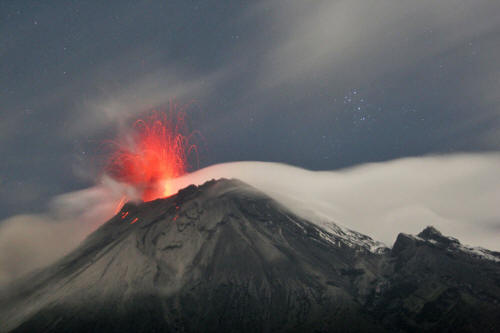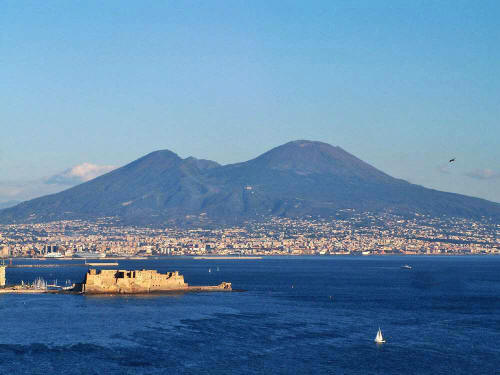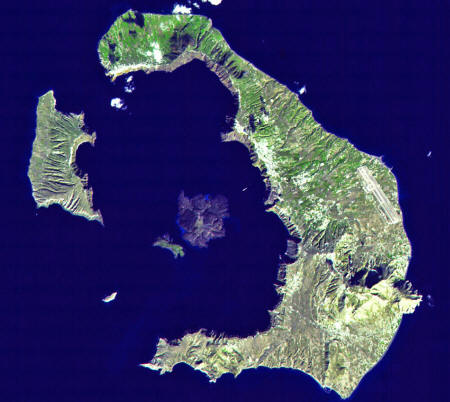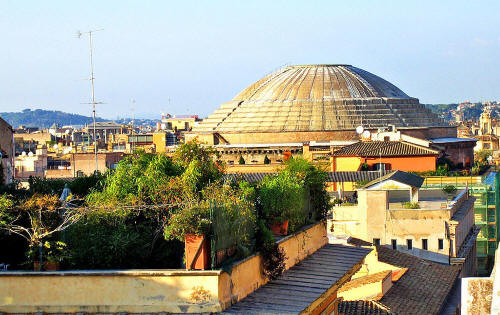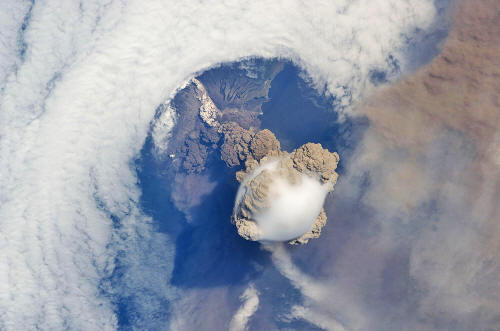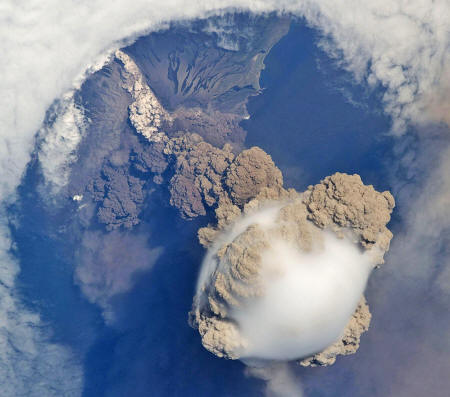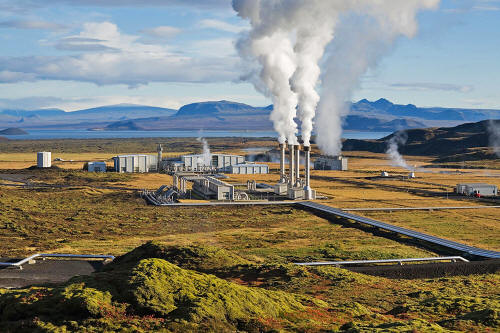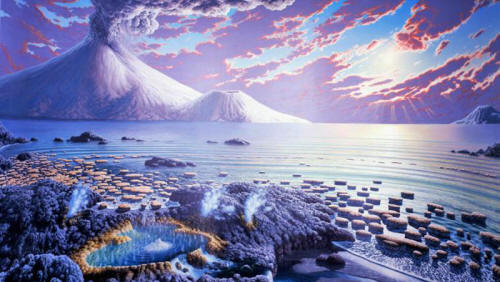|
from UniverseToday Website
Credit: Patrick
Taschler
In fact, there are few forces of nature that rival their sheer, awesome might, or have left as big of impact on the human psyche. Who hasn't heard of tales of Mt. Vesuvius erupting and burying Pompeii?
There's also the
Minoan Eruption, the eruption that
took place in the 2nd millennium BCE on the isle
of Santorini and devastated the Minoan settlement there.
From enriching the soil to creating new
landmasses, volcanoes are actually a productive force as well.
And depending on the chemistry of the magma from which it erupted, this ash will be contain varying amounts of soil nutrients. While the most abundant elements in magma are silica and oxygen, eruptions also result in the release of,
...amongst others.
...which are in turn rich in iron, magnesium, and potassium. As a result, regions that have large deposits of volcanic soil (i.e. mountain slopes and valleys near eruption sites) are quite fertile.
For example, most of Italy has poor
soils that consist of limestone rock.
Credit: Wikipedia
Commons/Jeffmatt
The soil in this region is rich because
volcanic eruption deposit the necessary minerals, which are then
weathered and broken down by rain. Once absorbed into the soil, they
become a steady supply of nutrients for plant life.
Between the 15th and 18th centuries on the islands of Kauai, O'ahu and Molokai, the cultivation of crops like taros and sweet potatoes allowed for the rise of powerful chiefdoms and the flowering of the culture we associate with Hawaii today.
For example, the entire
Hawaiian chain of islands was
created by the constant eruptions of a single volcanic hot spot.
Over hundreds of thousands of years, these volcanoes breached the
surface of the ocean becoming habitable islands, and rest stops
during long sea journeys.
...were all formed along arcs that are
parallel and close to a boundary between two converging tectonic
plates.
Credit: EOS/NASA/
Public Domain
Along the Hellenic Arc (in the eastern Mediterranean), volcanic eruptions led to the creation of,
The nearby South Aegean Arc meanwhile led to the formation of,
And in the Caribbean, volcanic activity
led to the creation of the
Antilles archipelago.
For instance,
When volcanic ash and compounds like sulfur dioxide are released into the atmosphere, it can reflect some of the Sun's rays back into space, thereby reducing the amount of heat energy absorbed by the atmosphere.
This process, known as "global
dimming", therefore has a cooling effect on the planet.
(located in Russia's Kuril Islands, northeast of Japan) in an early stage of eruption on June 12, 2009. Credit: NASA
In that time, several dips have been
observed in global temperatures after large eruptions. And though
most ash clouds dissipate quickly, the occasional prolonged period
of cooler temperatures have been traced to particularly large
eruptions.
These fields, which are the result of
present, or fairly recent magmatic activity, come in two forms. Low
temperature fields (20-100°C) are due to hot rock below active
faults, while high temperature fields (above 100°C) are associated
with active volcanism.
But they can also be harnessed for
geothermal energy, a form of carbon-neutral power where pipes are
placed in the Earth and channel steam upwards to turn turbines and
generate electricity.
Nesjavellir Geothermal Power Station in Iceland.
Credit: Gretar
Ívarsson/Fir0002
...geothermal power is responsible for providing a significant portion of the country's power supply - ranging from 14% in Costa Rica to 51% in Kenya.
In all cases, this is due to the countries being in and around active volcanic regions that allow for the presence of abundant geothermal fields.
In short, Earth's atmosphere began to form after its formation 4.6 billion years ago, when volcanic outgassing led to the creation of gases stored in the Earth's interior to collect around the surface of the planet.
Initially, this atmosphere consisted of
hydrogen sulfide, methane, and 10 to 200 times as much carbon
dioxide as today's atmosphere.
Much of the carbon dioxide dissolved
into the oceans, where
cyanobacteria developed to consume
it and release oxygen as a byproduct. Meanwhile, the ammonia began
to be broken down by photolysis, releasing the hydrogen into space
and leaving the nitrogen behind.
However, according to recent geological studies, biomarkers indicate that oxygen-producing cyanobacteria were releasing oxygen at the same levels there are today.
In short, the oxygen being produced had
to be going somewhere for it not to appear in the atmosphere.
towards the end of the Archaean Era, oxidation of our atmosphere began.
Credit: ocean.si.edu
During the Archaean Era, there were only submarine volcanoes, which had the effect of scrubbing oxygen from the atmosphere, binding it into oxygen containing minerals. By the Archaean/Proterozoic boundary, stabilized continental land masses arose, leading to terrestrial volcanoes.
From this point onward, markers show
that oxygen began appearing in the atmosphere.
As you can see, volcanoes are actually a pretty creative force when all is said and done.
In fact, us terrestrial organisms depend
on them for everything from the air we breathe, to the rich soil
that produces our food, to the geological activity that gives rise
to terrestrial renewal and biological diversity.
|


